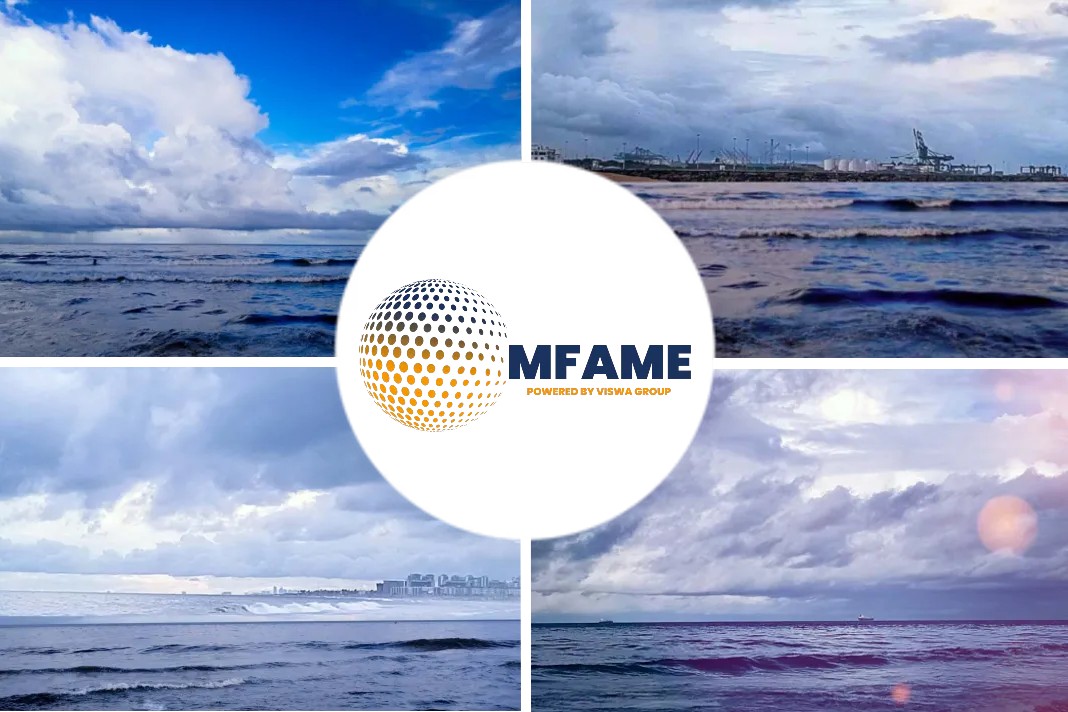With the new sulfur limit coming into force in 2020, ship owners and operators are looking to comply with the regulation, and a debate has ensued over the use of scrubbers, says a press release published on The LoadStar website.
The debate over the use of scrubbers include what are open-loop and closed-loop scrubbers and how harmful are scrubbers to the environment. Here’s an excerpt from it.
The new sulfur regulation
Here’s a quick recap of the new sulfur regulation:
- In October 2016, the U.N. International Maritime Organization (IMO) announced the sulfur content limit of bunker fuels to 0.5 %, compared to the current 3.5 % in most parts of the world, as of 2020.
- The new regulation aims to protect the environment and human health
- It affects many parties in supply chains, including ship owners and operators, cargo owners and companies that use ocean freight to transport their products, and third-party logistics providers offering ocean freight services.
- Roughly 90 % of world trade is by sea and sulfur-rich fuel powers the merchant fleet of about 95,000 vessels, including container ships.
Scrubber option for compliance
Ship owners and operators, including boxship carriers, are already evaluating their options to comply with the new sulfur regulation.
One option is to use ‘scrubbers’, systems that clean exhaust gases. Ships can install scrubbers to ‘clean’ emissions before release into the atmosphere, meaning that they can continue to use high-sulfur fuel and still comply with the 0.5 percent limit.
Scrubbers under scrutiny
Scrubbers recently became the focus of attention due to their possible impact on sea pollution.
The IMO, following a meeting of its sub-committee on pollution prevention and response in London at the end of February, has called on countries, organizations and its own experts to carry out more studies on the environmental impact of open-loop scrubbers on the sea.
Vessels using open-loop scrubbers discharge scrubber wastewater into the sea, whereas closed-loop or hybrid scrubbers allow for temporary storage and later disposal of scrubber wastewater.
The main point of argument is the impact of open-loop scrubbers on the marine environment, as well as potential effects of pollution on sensitive marine areas.
Open-loop scrubbers are allowed by the IMO, but face pressure from some regions, most recently being prohibited in China and Singapore.
Existing studies show conflicting results on the environmental impact of scrubbers:
- A study conducted by Germany warned of increased marine pollution from the use of open-loop scrubbers.
- In contrast, a study conducted by Japan argued that scrubbers have no “unacceptable” effects on the sea or marine organisms.
- More recently, Carnival Corporation released results of a multi-year study of washwater effluent from its exhaust gas scrubber systems. The findings indicate that “open-loop scrubber effluent complies with the discharge concentration standards used by the IMO, and even with the standards used by shoreside water quality regulators in Europe, including EU limits for inland surface water”.
EU’s proposal for scrubber discharge rules
Meanwhile, the EU proposed the IMO’s Marine Environment Protection Committee meeting to consider developing rules for scrubber discharges.
The EU proposal does not table specific measures, but it introduces the idea of restricting, or even prohibiting, scrubber water discharges in certain cases as one possible scenario.
In response, scrubber advocates, including the Clean Shipping Alliance lobbying group, have criticized the EU for pushing through this proposal to the IMO about creating harmonized rules for scrubber water discharges.
The scrubber market
The scrubber market is already booming as ship owners and operators turn to retrofitting to comply with the sulfur limit:
- The world’s major container carriers, with MSC in the lead followed by Evergreen, have ordered more than 500 scrubbers, reports Alphaliner.
- Clarksons estimates as of February 2019 that including pending additions, 2,500 vessels are set to be fitted with scrubbers. It is also projected that up to 10 percent of the global fleet by capacity will be fitted with scrubbers at the start of 2020, with the share rising to 15 percent at the end of that year.
- Research and consultancy firm Fact.MR notes that the global scrubber market will grow by 20.4 percent on average between 2018 and 2028. The report projects that this market will be valued at over US$ 11 billion between 2018 and 2028.
Depreciation of asset value?
Apart from the environmental impact, scrubbers are also raising technical issues. Just like any other retrofits or equipment modifications, scrubbers could lead to potential technical problems such as corrosion and extra power consumption.
Analysts point out that ship owners choosing to fit scrubbers on their vessels could risk a depreciation of asset values in the long run.
Scrubbers an economical option?
Japanese line ONE, for instance, plays it safe. The company will fit scrubbers on up to 10 vessels in early 2020, although the company still expects the majority of its fleet to use compliant fuel to comply with the new sulfur limit.
The move to scrubbers will only make economic sense if prices for low-sulfur fuel are significantly higher than that for high-sulfur fuel, something which remains unknown at this time.
IMO’s 2015 scrubber guidelines
The IMO’s 2015 scrubber guidelines provide guidance on the testing, survey, certification and verification of scrubbers. These guidelines are not mandatory, but they set standards internationally and are to be revised by 2020.
Panalpina is monitoring developments and proactively providing its customers with qualified advice and information about the new sulfur regulation and its impact on global supply chains.
Did you subscribe to our daily newsletter?
It’s Free! Click here to Subscribe!
Source: TheLoadStar

























